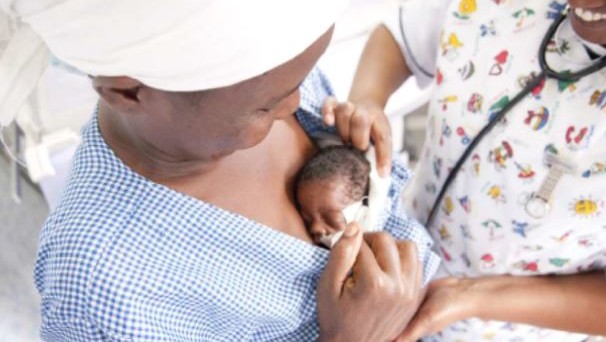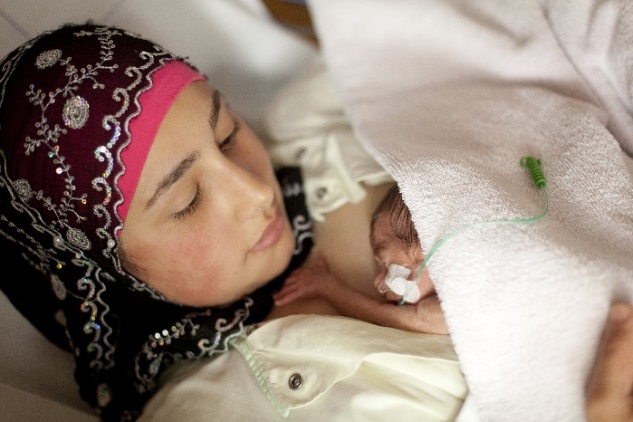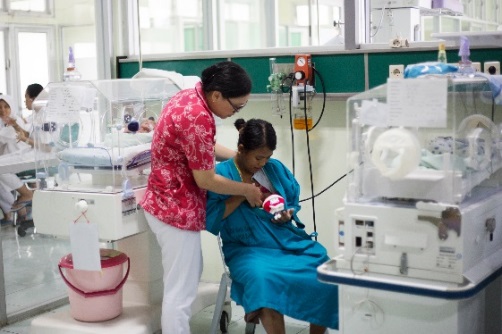
Every year there are nearly 15 million newborns that are born preterm – before 37 weeks completed gestation. Direct complications of preterm birth is now the leading cause of child death and accounts for an estimated 36% of the world’s 2.7 million neonatal deaths.
Babies that survive prematurity are more likely to suffer from disability, developmental delay and hearing and visual impairments, especially where the quality of care they received is poor.
Our recently published series in BMC Pregnancy and Childbirth is dedicated to describing some of the challenges that health systems face to deliver quality care for women and their babies. This work was carried out as part of the Every Newborn Action Plan (ENAP) process; a global multi-partner effort to end preventable newborn deaths and stillbirths.
Data were collected through a series of workshops in 12 countries in Africa and Asia (Afghanistan, Bangladesh, Cameroon, Democratic Republic of Congo, India, Kenya, Malawi, Nepal, Nigeria, Pakistan, Uganda, and Vietnam).
Experts on maternal and newborn health discussed and reported some of the principle challenges to providing maternal newborn care within their health system. These 12 countries account for more than half of the world’s maternal and newborn deaths. However, the findings are relevant to all countries across the world.
As a neonatal nurse and now a health systems researcher, I found some of the most interesting results to be the differing challenges for various components of care for premature and sick newborns.
Kangaroo mother care

Kangaroo mother care is a low cost intervention; it could half the number of deaths among very low birth weight newborns (<2000g) compared to conventional care.
As premature newborns struggle to regulate their temperature, this intervention substitutes the warmth of an incubator with closeness to the mother.
The baby is nursed in continuous contact with her, simultaneously protecting the baby from infections and supporting bonding, breastfeeding, growth and cognitive development.
Our findings show that this approach to caring for newborns is considered highly feasible and attractive in Africa, but not in the Asian countries examined.
Kangaroo mother care may be perceived in some countries as a ‘poor man’s solution’, with some countries in Asia preferring high technology solutions. Yet in some high income countries (for example, in the Scandinavian block), kangaroo mother care is being rapidly scaled up. Humanizing neonatal intensive care is needed in every country to promote the empowerment of the family as caregivers and improve developmental outcomes of these vulnerable survivors.
Areas that need attention

At a practical level, implementing the Every Newborn action plan – including care of preterm babies – is possible, but our new analyses highlight the different areas of the health system that may need priority attention.
Firstly, human resources are critical. As explored in the Lancet Every Newborn and Midwifery series’, midwives are central to the provision of quality care to mothers and newborns at and around the time of birth.
Given the role a neonatal nurse plays in affecting newborn survival, there is a global need for supporting neonatal nursing as a distinct speciality.
Starting with simple steps, such as clear job descriptions, mentoring programmes and opportunities for career advancement, and working towards standardized training programmes, few of which exist outside high income countries.
Much progress has been made in reducing financial barriers to emergency obstetric care, yet few of these schemes also include inpatient care for preterm or sick newborns. This needs to change as the Sustainable Development Goal era advances universal health coverage. The experience of a premature and sick newborn must not be financially, as well as emotionally, crippling for families.
Community focus is also crucial. Families, especially mothers, need to be closely involved in the care of their sick babies – in whichever way this can be translated in different cultures, and reflected in national policy, social norms and hospital guidelines.
Metrics, data and accountability
The final papers in this new series tackle the issue of metrics, data and accountability for newborns, outlining a measurement improvement roadmap that is rapidly progressing as part of the ENAP. Without robust data to measure the size of the problem and where interventions are not reaching those that need them most, it will be impossible to effectively target our efforts for newborns.
Data on child deaths helped us to achieve remarkable progress towards the Millennium Development Goals.
Data on child deaths helped us to achieve remarkable progress towards the Millennium Development Goals. The rate of progress in reducing newborn deaths is much slower than for child deaths.
For example, 63 countries need to accelerate progress to reach targets for newborn mortality, more than the 47 countries for the child mortality target. Importantly coverage data of specific interventions, such as provision of antibiotics for newborn infections or for kangaroo mother care, are missing.
Without these data how do we understand what needs to be done at programme level? Are health facilities prepared? We have many of the interventions that work to reduce death and disability, but these rely on strong health system to deliver these interventions effectively.
Steroids given to mothers are effective in reducing preterm deaths from breathing difficulties. However, these drugs can only be given safely at facilities that have the ability to assess the gestational age of the baby, the health of the mother and provide quality inpatient care for newborns. Our findings showed that data on coverage, processes and quality control systems are fundamental to delivering better care.
Universal health coverage is one of the greatest challenges facing us as we work towards the Sustainable Development Goals – and how we care for our sick newborns is one of the most sensitive indicators of health system function of in any country.
Comments